What are non-verbal reasoning questions like?
In the GL-based tests (which most grammar schools now use for the 11 Plus), there are six main types of non-verbal reasoning questions. Our geeky team of question-loving analysts has studied every past paper, and we can confirm that it’s now a much more streamlined format than it used to be, which makes it far easier for children to learn, practise, and gain confidence in this subject.
What are these questions testing for?
Non-verbal reasoning questions are designed to test a different type of intelligence from the maths, English and verbal reasoning exams: visual and spatial reasoning, pattern recognition, logical thinking, and problem-solving. It’s the sort of intelligence that theoretically can’t be taught, but in practice, children can become much quicker and more accurate with a bit of focused practice.
We often find that children who shine in non-verbal reasoning aren’t always the top scorers in maths or English, so it can be wonderful for them to discover a hidden strength they never knew they had!
The six question types
Here’s a quick overview of each question type your child might face in the test:
🧩 Code questions
These questions are all about cracking visual codes. Some children spot the patterns straight away, while others need to learn a clear method. Either way, with a little practice, these become very doable. There are 2 types of code questions, but the approach needed to crack them is very similar for both:

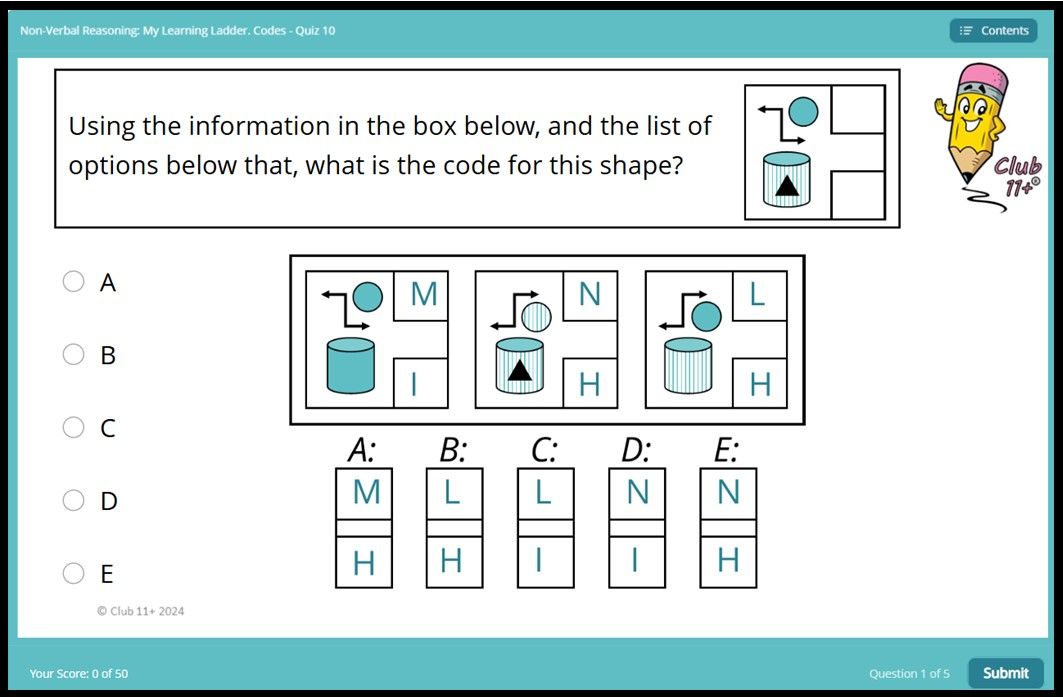
🧠 Filling in the gap
In these questions, children are shown a series of 2 or 3 images with a pattern of change, and they need to figure out what comes next. It’s like finishing off a visual sequence - fun and satisfying when the answer clicks:
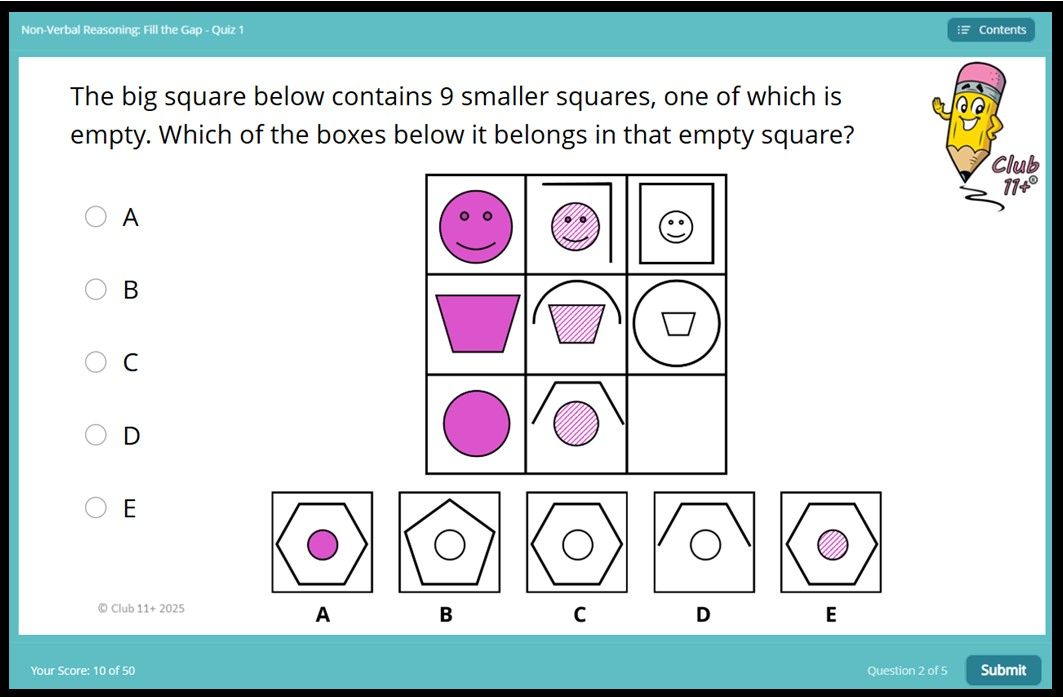
❓ Odd one out
These questions involve a group of five images. Children must spot what the key features are that most of them share, and then pick the image that doesn’t fit - they're a great exercise in pattern recognition:
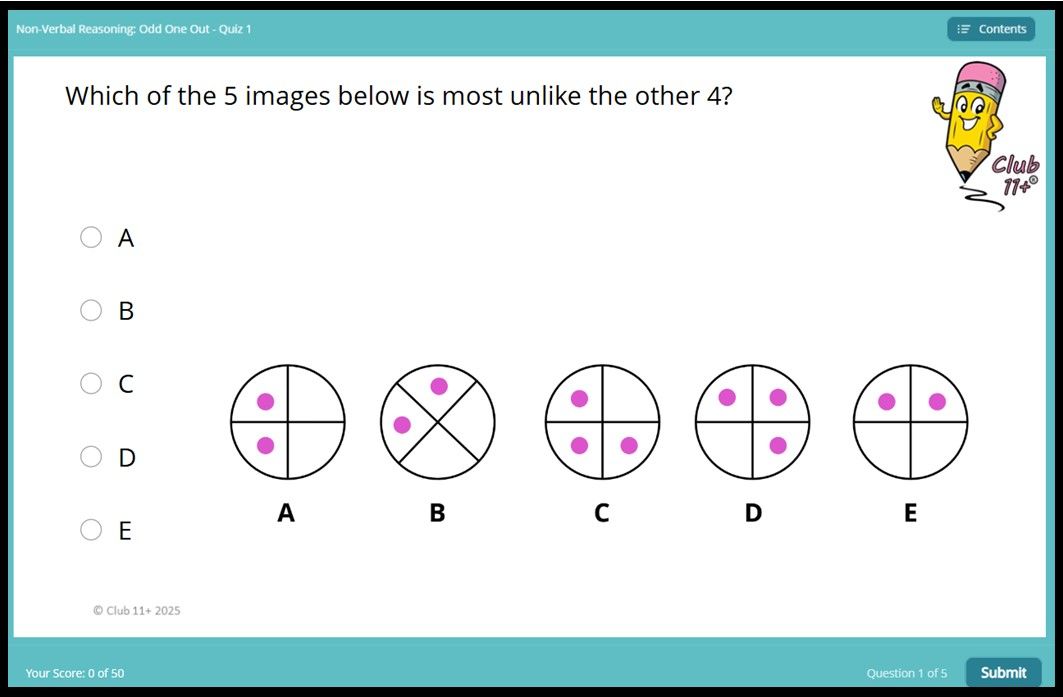
🧬 Sequences
These questions are like visual stories - one image changing into another in a logical way. One image in the series is missing, and your child needs to figure out how the changes happen and choose the missing image that fits:
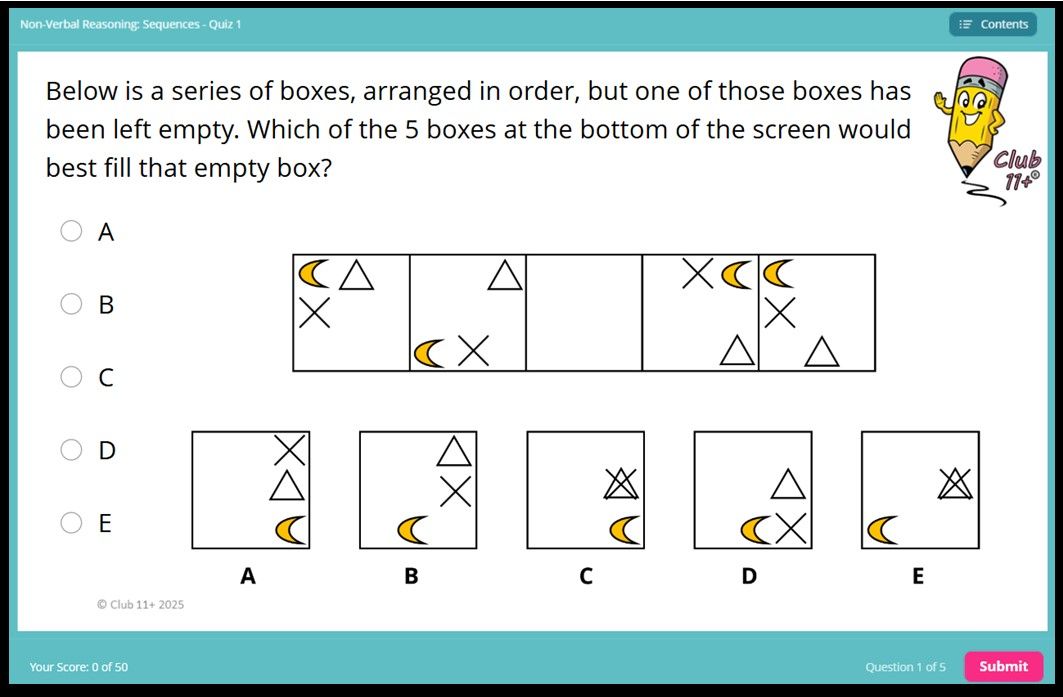
🔁 Pairs
These questions are all about transformation. A child is shown a pair of related images, and has to work out what has changed from the first to the second. Then they apply that same change to a second set of images to complete the pair:
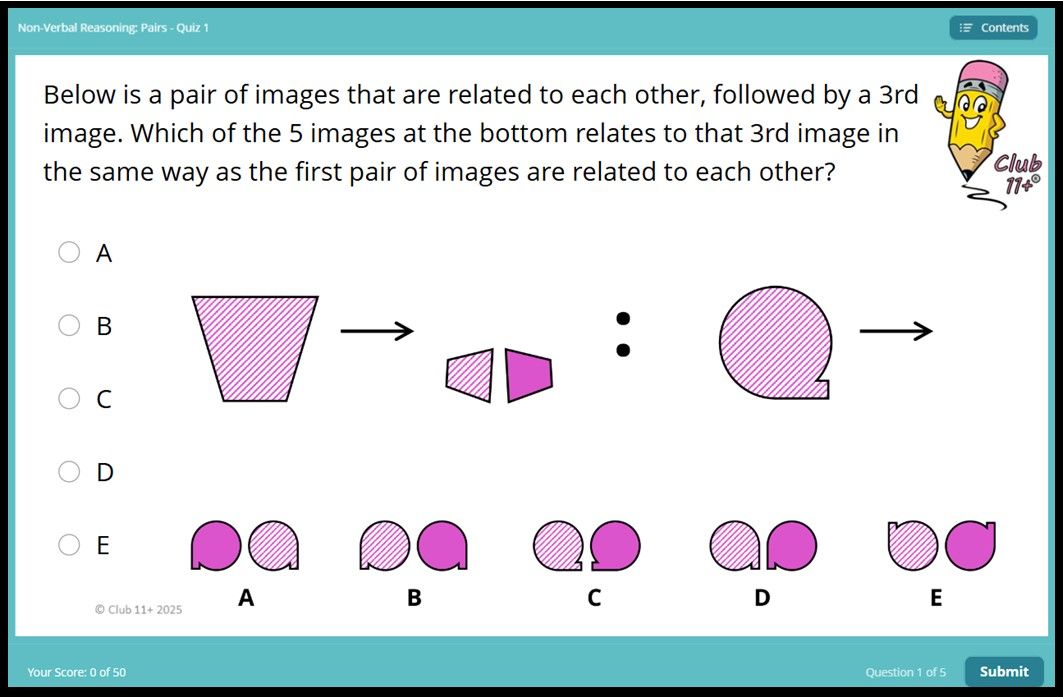
👀 Spotting similarities
In these questions, children look at a group of images and identify what they all have in common, then choose which of the answer options best matches the group:
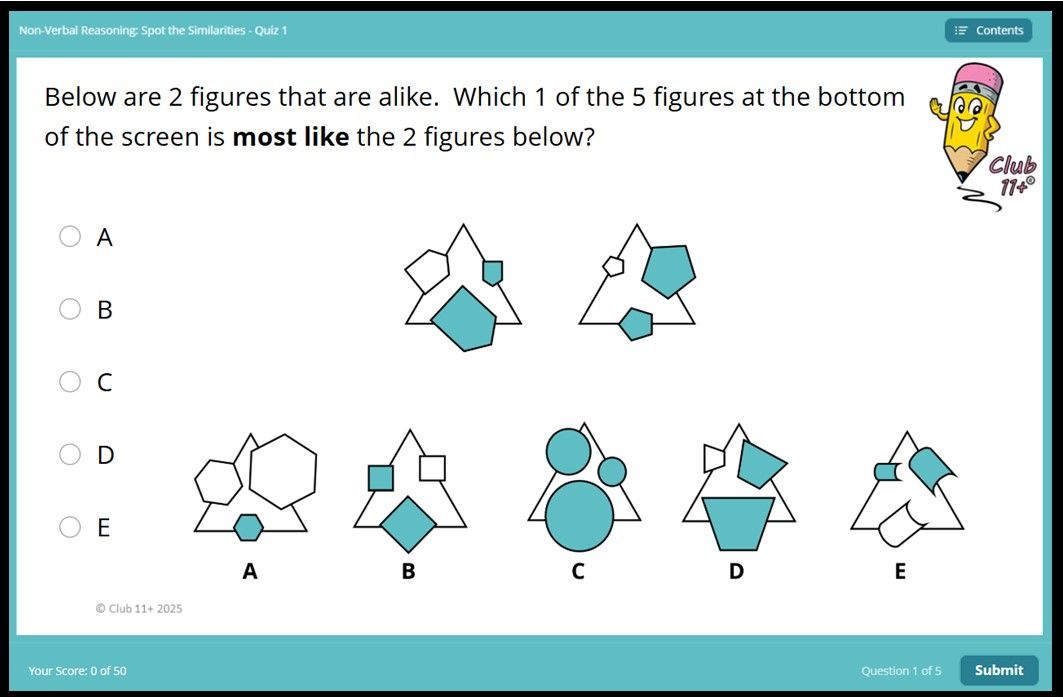
Practice makes powerful
At Club 11 Plus, we have hundreds of quizzes covering all of these types of non-verbal reasoning questions, so your child can get familiar with every format, boosting their confidence and giving themselves the best chance to shine on test day.
We even have a free example of each question type in our Free Quizzes section, so you can try them out right now without needing to subscribe.
But if you do decide to subscribe to Club 11 Plus, bear in mind our mission: at just £19.99 per month, we’re working hard to make high-quality 11 Plus preparation affordable for every family.
Get in touch
We’re always here to help. If you have any questions or feedback, just get in touch. At Club 11 Plus, your wish is our command (well, as long as it’s 11 Plus related!).
